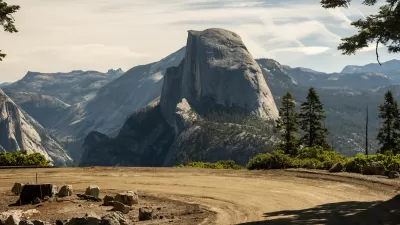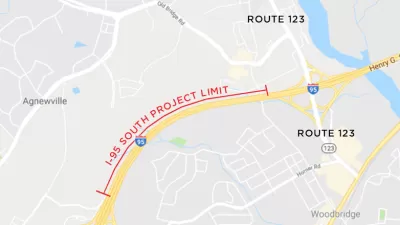The Infrastructure Investment and Jobs Act of 2021 promised to achieve major progress on emissions reductions and climate resilience. A total of 38 states used the bill to fund emissions- and pollution-producing car-centric infrastructure instead.

A total of $755 million in funding intended for climate resilience and emissions reductions from the Infrastructure Investment and Jobs Act (IIJA) has instead been repurposed for highway construction projects, according to a recent article by Ian Duncan in the Washington Post.
Last year, 38 states “made use of a provision in the law” to shift the funding to general-purpose highway construction accounts, reports Duncan, citing records from the Federal Highway Administration acquired through the Freedom of Information Act as proof.
“California shifted $97 million to pay for safety projects. New York moved $36 million to fund what officials called the state’s ‘core capital program,’” writes Duncan “Arizona said it used $20 million for its five-year highway construction program, largely for “pavement preservation,” and Louisiana used $8.2 million to fund roundabouts near an outlet mall.”
“Five states couldn’t account for how the money was used after it was transferred,” adds Duncan.
The Article echoes the news since the IIJA’s adoption—states have complained about slow funding programs while others, such as Nebraska, immediately got to work funding projects that will immediately increase pollution and emissions. To be fair, we were warned this could happen.
As for how states were able to pervert the intentions of these taxpayer-funded funding programs, Duncan blames the bipartisan compromises that produced the IIJA, along with a legal provision predating the law’s approval. “A legal provision predating the infrastructure law allows states to shift up to half of their federal transportation funds among several programs — a provision that also applies to transportation money from the new law,” writes Duncan.
Kevin DeGood, director of the infrastructure program at the left-leaning Center for American Progress, is quoted in the article describing the news about the shifted funding as an “absolute failure.”
FULL STORY: States siphoned away $750 million in infrastructure law climate funds

Manufactured Crisis: Losing the Nation’s Largest Source of Unsubsidized Affordable Housing
Manufactured housing communities have long been an affordable housing option for millions of people living in the U.S., but that affordability is disappearing rapidly. How did we get here?

Americans May Be Stuck — But Why?
Americans are moving a lot less than they once did, and that is a problem. While Yoni Applebaum, in his highly-publicized article Stuck, gets the reasons badly wrong, it's still important to ask: why are we moving so much less than before?

Using Old Oil and Gas Wells for Green Energy Storage
Penn State researchers have found that repurposing abandoned oil and gas wells for geothermal-assisted compressed-air energy storage can boost efficiency, reduce environmental risks, and support clean energy and job transitions.

Greening Oakland’s School Grounds
With help from community partners like the Trust for Public Land, Oakland Unified School District is turning barren, asphalt-covered schoolyards into vibrant, green spaces that support outdoor learning, play, and student well-being.

California Governor Suspends CEQA Reviews for Utilities in Fire Areas
Utility restoration efforts in areas affected by the January wildfires in Los Angeles will be exempt from environmental regulations to speed up the rebuilding of essential infrastructure.

Native American Communities Prepare to Lead on Environmental Stewardship
In the face of federal threats to public lands and conservation efforts, indigenous groups continue to model nature-centered conservation efforts.
Urban Design for Planners 1: Software Tools
This six-course series explores essential urban design concepts using open source software and equips planners with the tools they need to participate fully in the urban design process.
Planning for Universal Design
Learn the tools for implementing Universal Design in planning regulations.
Heyer Gruel & Associates PA
City of Moreno Valley
Institute for Housing and Urban Development Studies (IHS)
City of Grandview
Harvard GSD Executive Education
Salt Lake City
NYU Wagner Graduate School of Public Service
City of Cambridge, Maryland





























